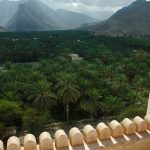Desert Survival – Plant Magic (07.04.17)
From the Western Sahara to the Gulf of Oman it is getting hot in the deserts at this time of year.

Strangely, this is one of my favourite times to visit, as the winter season breaks from hot days and cooler evenings to a higher level of scorching dry heat.
The question of survival becomes intense, especially when walking through the fiercer sand dunes and dry-as-a-bone mountain sceneries. Which, when travelling with knowledgeable local Bedouin, teaches you to appreciate their art of survival even more.

Over time, top of desert people’s survival list has been engaging the help of the incredibly limited indigenous plant life. The moment you enter the beautiful, yet brutal, desert on foot (away from any road trail or camel caravan), the impact of aloneness, exposure and vulnerability heightens levels of anxiety about survival – to a backdrop of deafening desert silence.
I was recently reminded of the local knowledge when trekking through some of the Biblical regions of the Arabian Peninsula. Having previously negotiated deserts in Oman, The Yemen, Egypt, Libya, Morocco, Algeria, Syria, Jordan, north America, Asia and Australia this allowed me to test my knowledge on the most friendly shrubs, bushes and plants.

They may not look much, but they sure do have their uses. Here’s my ‘Six of the Best’ desert plants:
1. Oleander: known for its toxicity, this is one of the world’s most poisonous plants. Therefore uneaten by local animals or birds.
However, it is excellent for getting rid of goats’ fleas, when mixed into a washing fluid.

2. White Broom: a perennial shrub, which when smashed up and mixed with additional flowers, treats skin problems. For example traditionally used under splints for broken bones.
When powdered and mixed with olive oil it also helps with burns. The seeds are also good for sheep and goats and their kindling splints act as a perfect safety pin.
It is also known as the ‘message tree’, as you can twist it into shapes and figures.


3. Sea Onion: the weather predictor. When its long stick appears, the temperature will change, with potential rain relief. Particularly during August/September.


4. Artemisia: a medicinal plant particularly good as a muscle relaxant, or for bringing down a fever. Traditionally used for lowering a baby’s temperature, by boiling, cooling down and then applying as a wash. It is also used as a healing plant – for example, the Bedouin wash goats or sheep in Artemisia if they have cuts after being attacked by a wolf.


5. Jwenty-anabasis (twenty-anabasis): the cleaning plant. When smashed up and added to water it is particularly good for washing hands. Excellent fire kindling.


6. Juniper: Great food, with sweet red berries. In addition, when the leaves have been soaked in water, it is a very effective hair conditioner. Also magical, in that it keeps away the ‘evil-eye’, when crushed, boiled and drunk. The Bedouin equivalent to a good gin-and-tonic at sundown.










